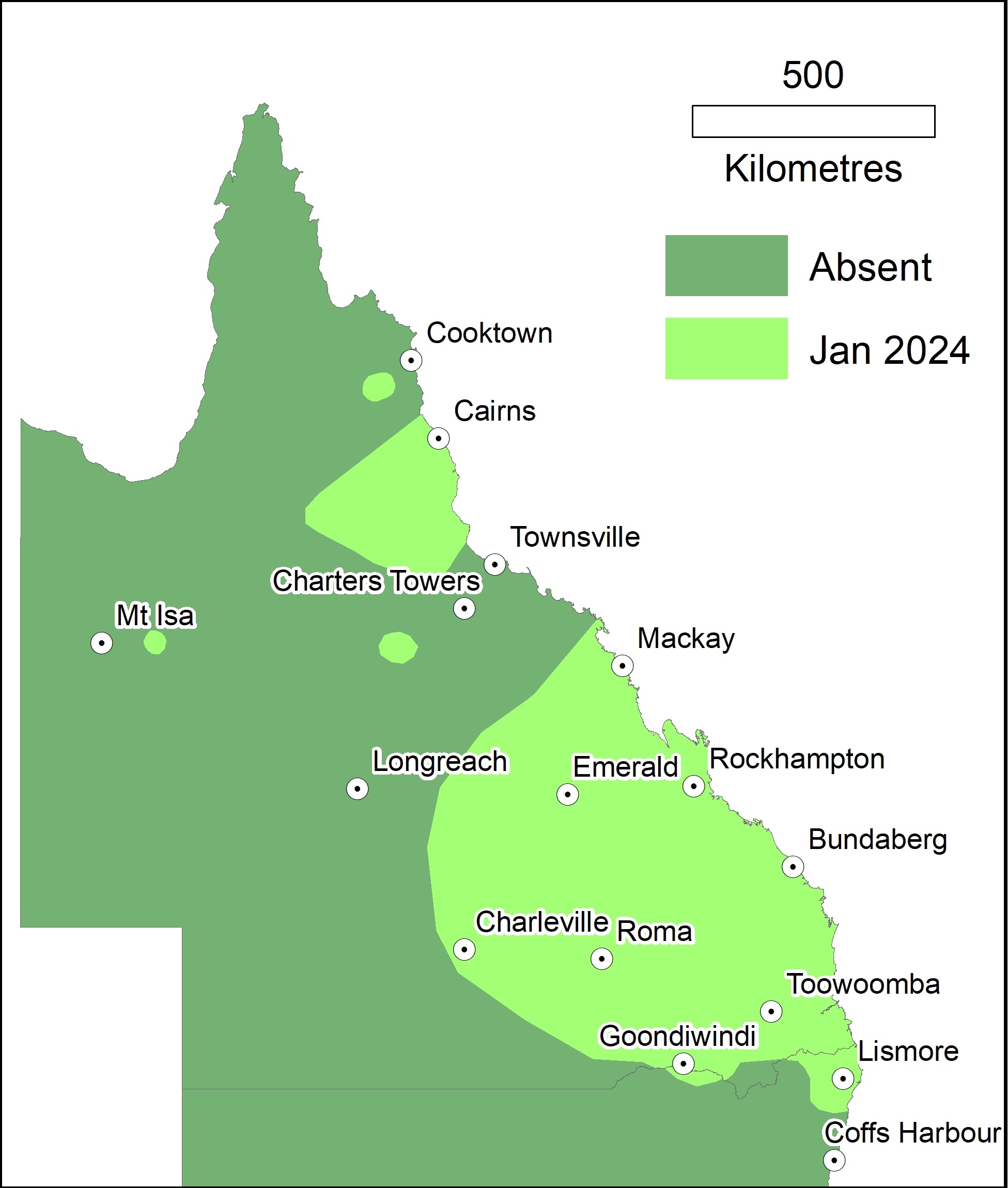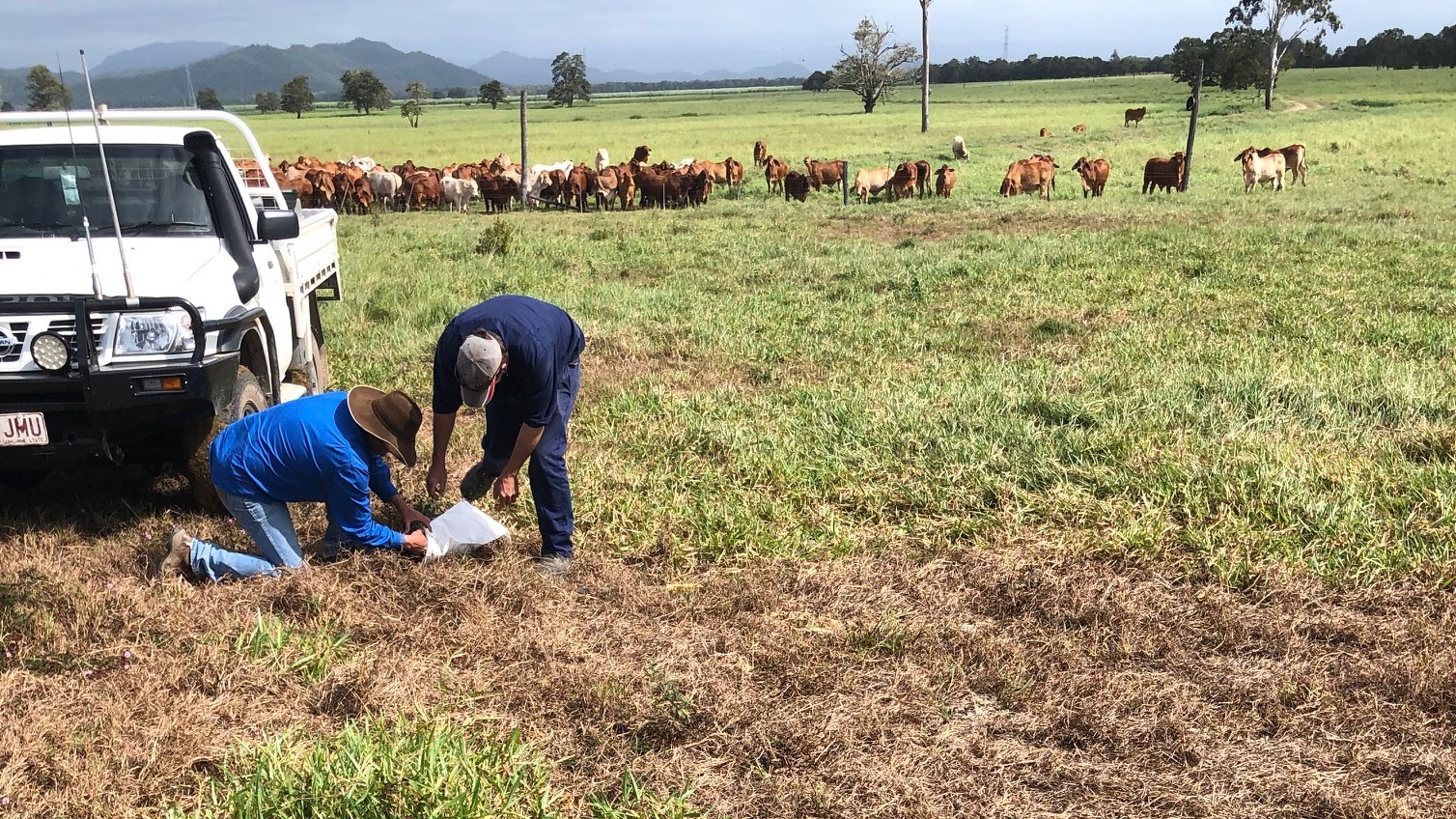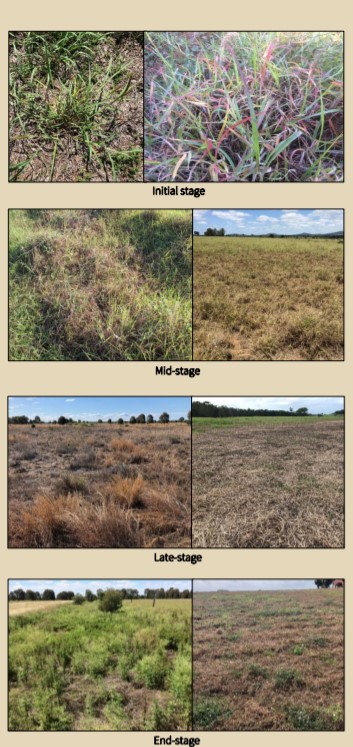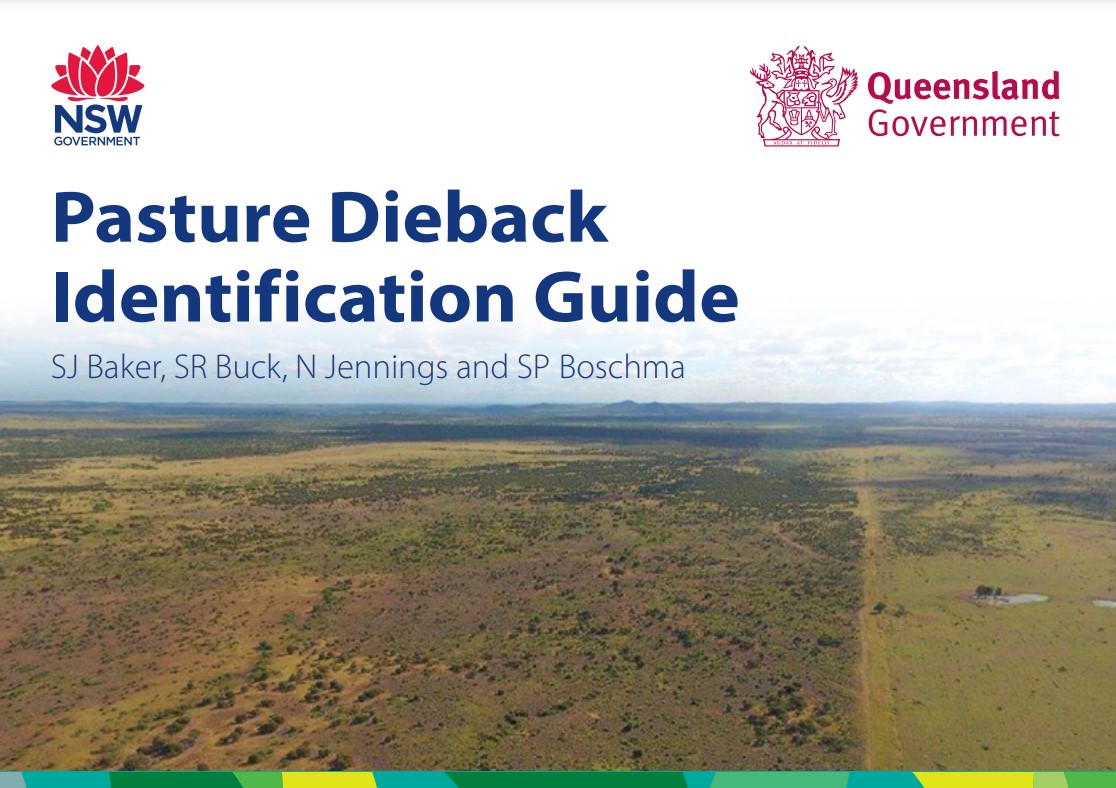Pasture dieback — signs and symptoms
Pasture dieback only affects tropical and sub-tropical grasses, causing premature death and unthrifty growth. Pastures in eastern Queensland are affected, specifically north and central Queensland, Wide Bay Burnett and south-east Queensland. Dieback in tropical grass-pastures was confirmed in north-east New South Wales in early 2020.

Pastures are initially affected in patches and exhibit leaf yellowing, reddening, or both, poor growth and senescence, and premature death. For reliable diagnosis other potential causes of the observed symptoms need to be ruled out. Currently, the pasture mealybug has been identified as the lead causal agent in pasture dieback.
The symptoms of dieback are similar across different grass species and affected plants generally display these characteristics:
- Yellowing and/or reddening of leaves, starting with the oldest leaves first
- Stunted, unthrifty plants with reduced leaf, tillers, height and seed-head size
- Reduced root system density
- Individual plants can be affected, though more commonly occurs as patches. Whole paddock(s) can eventually be affected
- Decreased grass density
- Death of plants in patches that are subsequently colonised by broadleaf weeds, legumes and occasionally annual grasses.

Contributing climate and management factors
Several climatic and management factors can influence the amount of pasture grown and hence the potential predisposition to dieback. These include (but are not limited to any combination, or all, of the following):
- higher than average annual rainfall over consecutive years
- long-term conservative stocking rate
- deferred grazing practices, for example spelling paddocks over the summer growing season
- excluding stock for long periods of time (un-grazed situations)
- application of fertiliser together with conservative stocking rates resulting in long-term high pasture yield.
Once dieback has occurred in a pasture, symptoms may be seen in seedlings while pasture yields are still low. Dieback has also been commonly observed when a dry period (where the pasture is dormant) is followed by a wet period in which the pasture affected by dieback does not respond. In these cases, pastures that are affected generally have moderate to high biomass yields before the dry period.

How do you know if you have pasture dieback?
Pasture dieback causes premature death of otherwise healthy grasses typically in patches across paddocks. The condition is more evident during the growing season (spring – autumn), especially after high rainfall. In the growing season, dieback-affected plants are easily contrasted against green healthy plants. Once affected, pastures can die within one season. Accurate identification of pasture dieback can be problematic due to similarities with other conditions.
Three factors need to occur before pasture dieback can be definitively diagnosed.
- Pastures need to be in the right location and exposed to conducive conditions. Dieback affects tropical and subtropical grass species, typically in high biomass yielding situations in higher rainfall districts (e.g. eastern Queensland). High pasture yield could also be due to high soil fertility (or from fertiliser), the long-term use of conservative stocking rates (i.e. low to moderate utilisation), or a combination of both.
- Pastures need to progress through the full cycle of symptoms. These are: initial-stage, mid-stage, late-stage and end-stage. A definitive diagnosis is unlikely if plants haven’t exhibited the full range of symptoms through to plant death. Therefore, multiple assessments over time are generally needed. These stages are common across all grass species observed to be affected by dieback.
- Confidence that nothing else could be causing the observed symptoms. Symptoms of yellowing and/or reddening of leaves, unthrifty plant growth and premature death can all be described as stress responses. Many other environmental and management factors can generate similar outcomes and need to be ruled out. These include (but are not limited to):
- moisture stress (either drought or waterlogging)
- nutrient deficiency, or tie-up (such as pasture rundown)
- temperature stress (frost, heat waves)
- high pasture utilisation
- soil variation, including chemical imbalances (pH, salinity, sodicity)
- time of year (late in the season)
- herbicide damage
- or a combination of these.
 Symptom cycle
Symptom cycle
Initial stage
Yellowing and/or reddening of individual leaves, starting from the oldest leaves on small numbers of pasture plants, or in patches of plants across the paddock. Variation in leaf colouration can occur between some grass types during the initial and mid stages. For example, Rhodes grass and green panic do not commonly exhibit reddening; yellowing of leaves is more typical. Whereas paspalum and setaria typically exhibit leaf reddening only at this stage.
Mid-stage
Stunted, unthrifty growth of plants in patches – or in severe cases, across whole paddocks – with obvious yellowing and/or reddening of multiple leaves or the whole plant.
Late-stage
Patches of near-dead or dead pasture, or whole paddocks in severe cases.
End-stage
Patches, or whole paddocks, of dead pasture with loosely attached grey coloured stems or crowns. Broadleaf plants can be found growing in these patches if subsequent rainfall has occurred.
For more information
The Queensland Department of Primary Industries (DPI) team is encouraging graziers affected by dieback (existing, new, or recovered) to make contact. This will help us understand this condition better, and to provide any available assistance. Please call the DPI Customer Service Centre on 13 25 23.
You can also contact Stuart Buck, Pasture Agronomist and DPI Pasture Resilience Project leader, on 0427 929 187.
Visit your local DPI office and talk to an extension officer.
